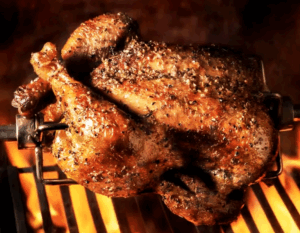The Role of POS Systems and Other Tools in Modern Restaurant Management

Point-of-sale (POS) systems serve as the backbone of modern restaurant management, functioning as the central hub where orders, payments, and customer data converge. Beyond simply processing transactions, today’s POS systems integrate various operational functions like inventory tracking, sales analytics, and employee scheduling. This comprehensive approach allows restaurant managers to monitor financial performance in real time, control costs, and improve staff efficiency. By digitizing key processes, POS systems reduce errors, speed up service, and provide actionable insights that help restaurants remain competitive in a fast-paced industry.
Enhancing Customer Flow with Reservation Apps
Reservation apps have revolutionized how restaurants manage guest seating and waitlists. These restaurant management tools allow customers to book tables in advance via websites or mobile apps, reducing wait times and streamlining front-of-house operations. For restaurants, reservation systems help optimize table turnover by forecasting demand and managing seating capacity efficiently. Additionally, some platforms send automated reminders and collect guest preferences, improving customer satisfaction and loyalty. When integrated with POS systems, reservation apps provide a seamless flow of information, enabling staff to prepare for arrivals and deliver a personalized dining experience.
Kitchen Display Systems for Streamlined Food Preparation
Kitchen Display Systems (KDS) transform traditional order management by replacing paper tickets with digital screens in the kitchen. Orders sent from the POS or reservation app instantly appear on these displays, organized by station and priority. This real-time communication minimizes errors and speeds up meal preparation, especially during peak hours. A KDS also improves coordination between front-of-house and kitchen staff, reducing miscommunication and enhancing overall efficiency.
The Power of Online Ordering Tools
Online ordering tools have become essential, especially with the rise of delivery and takeout services. These platforms connect directly to the POS, allowing orders placed through websites or third-party apps to flow seamlessly into the kitchen workflow. By automating this process, restaurants reduce manual entry errors and speed up order fulfillment. Online ordering also opens new revenue streams, reaches broader audiences, and offers convenience to customers. Many systems include features like menu customization, real-time order tracking, and payment processing, providing a smooth experience from click to delivery.
Integrating Tools for Comprehensive Management
The true power of modern restaurant technology lies in the integration of these tools. When POS systems, reservation apps, kitchen display systems, and online ordering platforms work together, restaurants benefit from unified data and streamlined operations. Managers can track everything from table occupancy and food preparation times to sales trends and customer preferences—all in one place. This holistic approach supports better decision-making, enhances the customer experience, and boosts profitability. As the restaurant industry evolves, adopting an interconnected suite of digital tools is no longer optional but necessary for sustained success.
Conclusion
Modern restaurant management relies heavily on technology to improve efficiency, accuracy, and customer satisfaction. POS systems serve as the operational heart, supported by reservation apps, kitchen display systems, and online ordering tools. Together, these solutions create a cohesive ecosystem that empowers restaurants to adapt, grow, and thrive in today’s competitive landscape.







